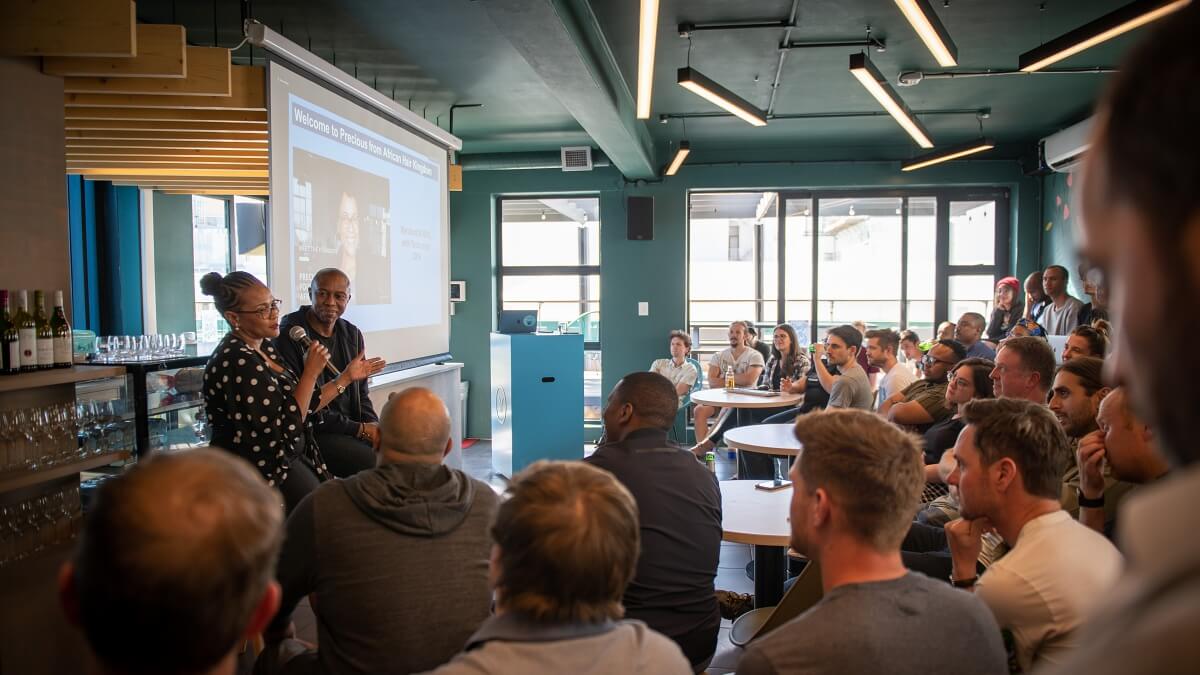Customer-centric product design: why, and how
Yoco exists for the people who use our products: the small business owners of South Africa who don’t always have the tools they need to achieve their objectives. Before we can create products and services that are meaningful and our customers love to use, we need to understand who they are, and what they need.
Our customers form the foundation of our products
This is how we approach user-informed product design:
- Rich and diverse storytelling
- A dedicated user research function
- Democratising research
We have some great Product Designers, but sometimes forget our whole company is involved in building our customers’ experience. Our brand and marketing is their first touch point; excellent product and service design is obviously key, but many other functions have an impact on how our customers will eventually interact with and experience our products:
- Our founders and Leadership team set the tone for focus and prioritisation.
- Our People team impacts the employee experience, which ultimately translates to customer experience.
- Our Finance team enables the rest of our teams to have access to the resources they need to create great products and move fast.
- Our Support team has an immediate impact when things go wrong for a customer. Their role is to not fix their issues but to increase their trust in Yoco
It’s crucial that everyone at Yoco has a deep understanding of our customers’ needs, values, and context. This enables a customer-centric approach which has, time after time, proven to be highly effective from a sustainable business perspective. Now the question is how?

1. Rich and diverse storytelling
We strongly believe that stories create empathy. I can present a report or slideshow on what people care about and what they need, but it’s hard to fully grasp the real people behind the statements and numbers. Stories bring things alive for people. It is especially powerful when our customers tell their stories themselves. These are two of the rituals Yoco uses to foster empathy throughout the whole company
- We constantly share stories from our interactions with our customers on our Slack channels, with a dedicated channel for #customer-empathy. Stories are not just shared by researchers, they are shared by everyone, and when possible we add photos and clips to bring the story alive.
- We have weekly fire-side chats with our customers in our company gatherings. Every week a different merchant joins the team (currently through Zoom) and tells us about their business and has a chat with our CEO. Then the floor is open for questions from anyone in the team, and we ask for feedback on how we can do better.
It’s crucial for us to provide a continuous stream of stories and voices of our customers, and also that these stories reflect our full customer base, not just the flashy stuff.
2. A dedicated user research function
Collecting compelling stories is not enough to properly inform strategic and/or design decisions. We have built a dedicated research team we call Customer Insights. They dive into specific topics, some very focussed, some more exploratory. Interestingly, our research team has only one researcher who traditionally trained as a researcher before they joined. This mix of backgrounds is an advantage. The real key ingredients to their success are a strong shared obsession with customers, a research framework, and toolbox of methodologies.
The tools we use include:
- Immersions and intercepts. A guerrilla-style approach where we go out (or call) people to get a high level understanding is what is going on.
- In-depth ethnographic research. Borrowed from anthropology, this is a more structured and planned approach which includes in-depth interviews with customers and their staff.
These researchers work directly in Product teams or with leadership stakeholders. They do not merely compile reports and then pass the baton; they work together when implementing the learnings and insights they build.
3. Democratising research
We don’t just want our researchers to do research and talk to customers, we want to lower the barrier for everyone to include our customers into our processes, whether it’s (in)validating an assumption, testing usability of a solution, or getting feedback or impressions on a brand refresh. We do this by creating a dedicated research operations function:
- They created the Yoco Research Community of customers who love to be involved in improving our products.
- They build the tools to enable efficient recruitment for customer engagements for anyone in the company, either through the research community, across our base, or with recruitment partners to enable interaction with people who are not yet customers of Yoco.
Furthermore, they manage budgets, escalate customer issues, and support anyone who wants to involve customers in their processes with a research framework and get hands-on in interviewing when necessary. The end-goal is to democratise research within Yoco so that cross-functional teams are empowered to participate, collaborate, engage with, and understand customers.
Please share your thoughts on the topic – I’d love to hear your experiences, and whether you agree or disagree with my ideas!



